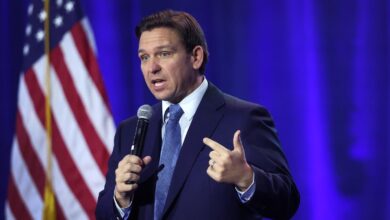The long road to more accurate portrayals of Black LGBTQ people on television

In the 1950s and 1960s, television mostly attempted to be inoffensive to a mass audience. When lesbian and gay characters were included (there was virtually no discussion of bisexuality or trans people), they were stereotyped caricatures: Gay men were “feminine” and often had “women’s” careers such as hairdresser and interior designer, and lesbians were “butch” because they, presumably, wanted to be “men.” One goal of these portrayals was to make lesbian and gay identity visible to viewers, in similar ways that race can often be read onto the body.
In the 1970s, the growing sophistication of television ratings systems dramatically changed TV programming. Networks could more clearly and quickly understand who was watching a particular series, making it easier to target 18-to-34-year-olds, whom advertisers coveted. And so, networks (mostly CBS and NBC) began buying “hip” programming from independent producers such as Tandem (owned by Norman Lear and Bud Yorkin) and MTM Enterprises (owned by Grant Tinker and Mary Tyler Moore). This shift resulted in pathbreaking programs such as “All in the Family,” “Sanford and Son” and “The Mary Tyler Moore Show” that tackled issues such as class, race and gender, topics previously considered too difficult for TV.
On occasion, these “hip” programs included episodic discussions of sexuality. And unlike earlier lesbian and gay portrayals, the characters in these shows were often dissociated from historical stereotypes, in part reflecting a change in public consciousness after the 1969 Stonewall uprising. For example, a 1977 episode of the “Sanford and Son” spinoff “Sanford Arms” featured Travis, a Black gay civil rights attorney who was a friend of one of the series’ characters. In the episode “Phil’s Assertion School,” Travis demonstrated that (Black) gay men weren’t all effeminate and, with his job as an attorney (who ultimately ended up helping a series star get out of a legal bind), that gay men could have careers outside the confines of “feminine” pursuits.
Yet, as conservative winds swept through the country in the 1980s and as AIDS (initially called GRID: gay related immune deficiency) began to decimate gay communities, this progress eroded. Black gay characters, when they appeared on television at all, returned to being more effeminate. For example, on “Saturday Night Live,” Eddie Murphy portrayed Dion. While he never said Dion was gay, the clues were ample for viewers who understood stereotypes of gay men — Dion was a hairdresser, frequently discussed his “roommate” Carlos and had a trademark giggle.
The portrayal of Black gay men on television started to change in the 1990s for three reasons. The networks — which now included broadcast and cable — realized that the young adult children of the White audiences they targeted in the 1970s were more willing to consume content with gay characters than their parents had been. Second, the expansion of cable television allowed for narrower audience targeting. Third, lifesaving medical advances shifted AIDS from a death sentence to a manageable chronic illness, erasing some of the stigma attached to it.
The result: an increase in Black gay representation. The decade began with “In Living Color’s” “Men On …” sketches featuring Antoine Merriweather and Blaine Edwards as two cultural critics who viewers were supposed to assume were gay based on their disdain for all things female and the lisps with which they spoke. But by 1991, these remnants of the past were left behind. From 1991 to 1993, for example, “Roc” included four episodes with Russell, Roc’s uncle, played by “Shaft” star Richard Roundtree — known for exuding hyper manliness. Roundtree’s first appearance as Russell, on the 1991 episode “Can’t Help Loving the Man,” also marked the first time the word “marriage” was used to describe a ceremony between two same-sex individuals. (“The Golden Girls” episode “Sister of the Bride” aired earlier in 1991 but called Clayton (Blanche’s brother) and Doug’s vows a “commitment ceremony.”)
The emergence of new channels and the growth of cable networks such as Lifetime and HBO (both of which began producing original programs) resulted in a parade of firsts for Black gay television representation. Black-cast sitcoms, including “Moesha” (1997) and “Good News” (1997), featured Black gay characters, with “Moesha” depicting the first Black gay teenager and the episode “Labels” being the first by a Black gay writer, Demetrius Bady. Multicultural sitcoms such as “Cutters” and “Spin City” included Black gay men as part of the fabric of the series, with “Cutters” (1993) being the first show to feature a Black gay character in a co-starring role. RuPaul also hosted “The RuPaul Show” on VH1, the first time a Black gay man (and drag queen) hosted a talk/variety show. The show welcomed big-name celebrities such as Diana Ross and Patti LaBelle alongside performances from Broadway shows.
Television shows in the 2000s built on these gains, with “The Wire,” “True Blood” and “Noah’s Arc” all featuring Black gay characters. Not only were more Black gay characters appearing in shows, but the portrayal of Black gay men was also changing. “The Wire” featured Omar, a character who not only defied old stereotypes, but also was the first Black gay character whose sexuality was secondary to his identity — which focused more on the fear and respect he commanded from Baltimoreans. “True Blood’s” Lafayette was a short-order cook and drug dealer. Demonstrating how far things had come, in 2006, “Noah’s Arc” premiered, becoming the first series to include a primary cast composed entirely of Black gay men and executive produced by a Black gay man, Patrik-Ian Polk.
Together, these programs and characters demonstrated that Black gay men could be multifaceted individuals who could remix stereotyped traits to create characters who were less easily categorized as “good” or “bad.”
And it wasn’t only cable that offered a more nuanced portrayal of Black gay men. Network sitcoms, “All of Us,” “The Game” and “Will and Grace,” all included episodes with Black gay characters in relationships. These characters represented an attempt by writers and producers to offer more nuanced representations of Black LGBTQ characters.
In the years since these breakthroughs, numerous series, including “Are We There Yet?,” “Dear White People” and “Brooklyn Nine-Nine,” have had Black gay characters, demonstrating perhaps that the old linkage between Whiteness and LGBTQ sexuality on TV is fading.
These changes matter. Representation can signal acceptance and normalcy that can be important for Black queer boys and men. Yet the battle does not end with more — or more nuanced — representation. For entertainment industries to truly make progress in representing Black LGBTQ characters, they need to hire more LGBTQ people of color to work in front of and behind the cameras while creating programming that doesn’t force single LGBTQ characters to represent all LGBTQ experiences. Only then can conversations about LGBTQ stereotypes be firmly left in the past.
























































